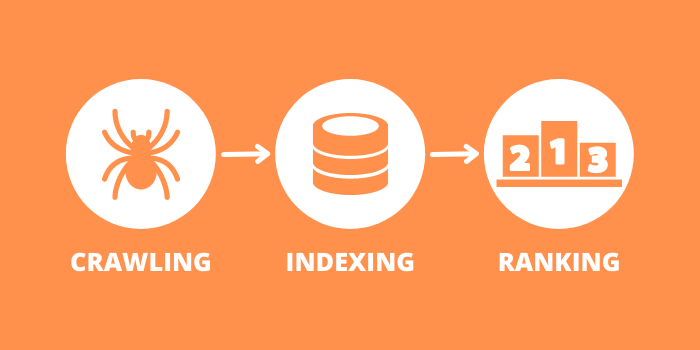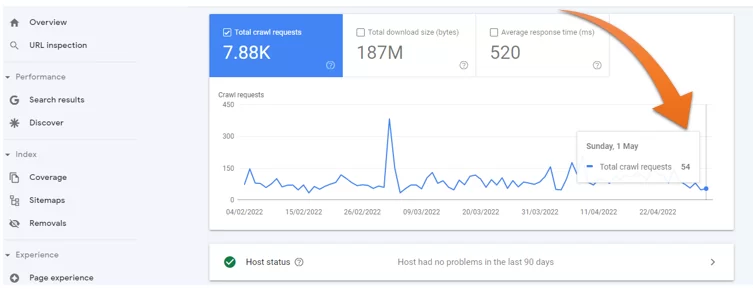
05.05.2022
The method for your website to stand out and be visible to users starts with the crawling of your website by Google bots. While completing this process, Google bots give priority pages that are easy to crawl, speed-optimized, and efficient. When Google bots visit your site, it indexes the pages it crawls. Thus, Google positions your website by evaluating it in three separate stages crawling, indexing and ranking.

The number of pages indexed at the end of this process carried out by Google bots is called crawl budget optimization. Thus, the more your crawl budget value is improved, the higher your visitor rate will be.
The amount of time and resources that Google devotes to crawling a site is commonly called the site’s crawl budget. The time Googlebots can devote to crawling a site is limited, and the crawling process is determined by the performance of sites on the web. For this reason, Google makes an assessment of the page numbers and resources of the sites and creates a crawl budget for each of them.
When your site’s source, theme, and contents are examined from multiple perspectives, detecting low-value pages can negatively affect your crawl budget. Spending your crawl budget on these pages can cause delays in reaching the target pages to the user.
Google allocates a crawl budget for your website by assigning a value according to the number of pages. The crawl budget allocated by Google bots to your web site calculated by dividing the current number of pages indexed by the number of pages crawled daily.
First, log in to Google Search Console and follow the steps Index > Coverage > Valid. Here you will see pages on your website with errors, valid with warnings, and valid and excluded pages. When we examine the table, we can access the number of pages indexed from the current section.

Second, go back to Settings > Crawl Stats > Open Report. When we examine the graph, you can see how many pages are crawled on your website daily.

Finally, you can follow our formula and calculate your crawl budget by dividing the current number of pages indexed by the total number of pages crawled daily.
If we calculate from our example, that the value of the current indexed page is 72; We see that the total number of pages scanned daily is 54. When we calculate our values according to our formula, we can find that the result is 1.33.
If your result is over 10, you need to optimize your crawl budget. If you get a value below 3, there is no problem with your crawl budget.
Crawl budget is not a direct ranking factor, but if you have an e-commerce page, crawl budget optimization will be a must-have in your work. Creating original content and pages without error codes on your site will make your indexing easier. Thus, your site will be able to rank in the SERP for its keywords and will be more accessible to the user.
References:
https://developers.google.com/search/docs/advanced/crawling/large-site-managing-crawl-budget
https://developers.google.com/search/blog/2017/01/what-crawl-budget-means-for-googlebot
Perfist Blog
Similar Articles

Regularly monitoring the destination URLs of your Google Ads campaigns is one of the most effective ways to protect your ad budget. Broken or misdirected pages waste paid clicks, lower your Quality Score, and hurt your conversion rates. In this article we’ll walk you step-by-step through building an automation system that exports Google Ads destination […]
Read More
Senior Level Performance Marketing
In this guide, we will explain what a session is in Google Analytics 4 (GA4), why session duration matters, which session metrics are available, and how to configure these settings. What is a Session in GA4? A session represents the group of interactions a user has with your website or mobile app within a given […]
Read More
Beginner Level Web/App Analytics
What is GEO (Generative Engine Optimization)? GEO is a new generation optimization method that ensures content stands out in AI-supported search systems. It aims to produce content that can provide quick and clear answers to user questions. In addition to traditional SEO, a simple and understandable language that appeals to artificial intelligence is used. Why […]
Read More
Mid Level SEO
GEO is an optimization method developed to ensure that content is better understood and recommended by AI-powered search engines. Previously, when writing content, the goal was solely to rank high on Google. Now, however, AI systems read these contents and present summaries to users. This is exactly where GEO steps in. It ensures that content […]
Read More
Mid Level Content Marketing